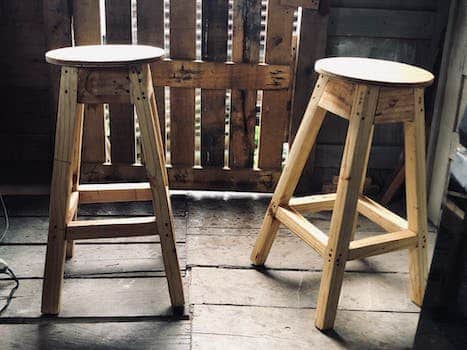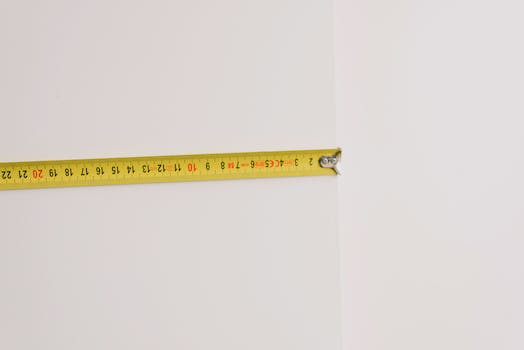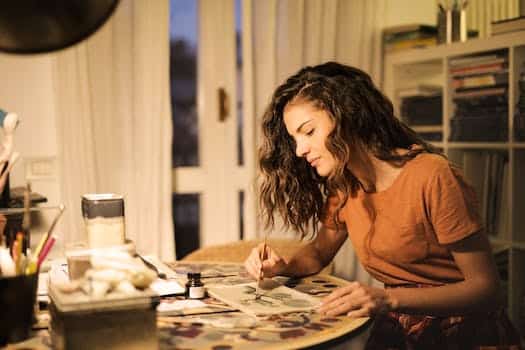Furniture restoration is a great way to breathe new life into old pieces and add character to your home. Whether you’re a seasoned pro or a beginner, these 10 techniques will help you transform your furniture and give it a fresh new look.
- 1. Introduction
- 1.1. What is furniture restoration?
- 1.2. Why is furniture restoration important?
- 1.3. Benefits of furniture restoration
- 1.4. Factors to consider before restoring furniture
- 1.5. Tools and equipment needed for furniture restoration
- 2. Preparation
- 2.1. Inspecting the furniture
- 2.2. Cleaning the furniture
- 2.3. Removing old finish
- 2.4. Filling in gaps and cracks
- 2.5. Sanding the furniture
- 3. Restoration
- 3.1. Staining the furniture
- 3.2. Applying a finish
- 3.3. Reupholstering furniture
- 3.4. Replacing hardware
- 3.5. Repairing structural damage
- 4. Maintenance
1. Introduction
Furniture restoration is an art that requires skill and patience. Whether you’re a seasoned pro or just starting out, knowing the right techniques can make all the difference. In this article, we’ll explore 10 furniture restoration techniques that every aspiring restorer should know. From sanding and staining to upholstery and hardware replacement, we’ll cover it all. So, grab your tools and let’s get started!
1.1. What is furniture restoration?
Furniture restoration is the process of repairing, refinishing, and restoring old or damaged furniture to its original condition. Restoration can involve repairing structural damage, replacing missing parts, and refinishing or repainting the piece to match its original appearance. The goal of furniture restoration is to bring new life to old or damaged furniture, preserving its historical value and aesthetic appeal.
1.2. Why is furniture restoration important?
Furniture restoration is the process of repairing, reviving, and refurbishing old or damaged furniture. It is important for several reasons. Firstly, restoring furniture can help to preserve its historical and sentimental value. Antique or heirloom furniture may have significant meaning or value to its owners, and restoring it can help to maintain its sentimental worth. Secondly, furniture restoration can be a more cost-effective option than buying new furniture. High-quality, well-made furniture can be expensive, and restoring an old piece can often be more affordable than purchasing a new one. Finally, furniture restoration is an environmentally friendly choice. By repairing and reusing old furniture, we can reduce waste and minimize our impact on the environment.
1.3. Benefits of furniture restoration
Furniture restoration is the process of repairing and refurbishing old or damaged furniture to bring it back to its former glory. This practice has become increasingly popular in recent years, as more people are looking for ways to preserve and repurpose their existing furniture instead of buying new pieces. There are many benefits to furniture restoration, including cost savings, environmental sustainability, and the ability to create a unique and personalized space. In this article, we will explore 10 furniture restoration techniques that you need to know in order to breathe new life into your old furniture.
1.4. Factors to consider before restoring furniture
Restoring furniture can be a fun and rewarding project, but it’s important to consider a few factors before diving in. First, take stock of the condition of the piece. Is it structurally sound, or does it require repairs before any cosmetic work can be done? Next, consider the value of the piece. If it’s an antique or has sentimental value, you may want to consult with a professional before attempting any restoration work. Finally, think about your own skill level and available time. Some restoration techniques require a significant amount of time and expertise, so be realistic about what you can accomplish.
1.5. Tools and equipment needed for furniture restoration
Before diving into the various techniques for furniture restoration, it’s important to have the right tools and equipment. Here are some must-haves for any DIY furniture restoration project:
– Sandpaper in various grits
– Wood filler
– Putty knife
– Paint scraper
– Paint stripper
– Paint brushes in various sizes
– Stain
– Sealant
– Screwdrivers
– Pliers
– Hammer
– Clamps
– Saw
Having these tools on hand will make the restoration process smoother and more efficient.
2. Preparation
Before diving into the techniques, it is important to prepare properly for furniture restoration. This includes gathering all necessary tools and materials, setting up a workspace with proper ventilation and lighting, and protecting surrounding areas from potential damage. It is also important to have a clear understanding of the type of wood and finish you are working with, as different techniques may be required for different types of furniture. Taking the time to properly prepare for restoration can lead to better results and a more enjoyable experience overall.
2.1. Inspecting the furniture
Before beginning any furniture restoration project, it is important to thoroughly inspect the piece you will be working on. Look for any areas of damage or wear, such as chips, cracks, scratches, or missing pieces. Take note of any areas that may require special attention, such as intricate carvings or delicate veneers. Additionally, check to see if the piece has any loose joints or structural issues that may need to be addressed before proceeding with the restoration process.
2.2. Cleaning the furniture
Before starting any restoration technique, it is important to properly clean the furniture. Use a soft cloth or brush to remove any dust and debris. For stubborn dirt or grime, mix a small amount of mild soap with water and gently scrub the affected area. Avoid using harsh chemicals or abrasives that can damage the surface of the furniture. Once the furniture is clean and dry, you can begin the restoration process.
2.3. Removing old finish
Before you can restore a piece of furniture, you need to remove the old finish. There are several ways to do this, including sanding, stripping, and using a heat gun. Sanding is the most straightforward method, but it can be time-consuming and messy. Stripping involves using a chemical solution to dissolve the old finish, and it can be a bit more complicated. A heat gun can also be used to soften the old finish, making it easier to remove. No matter which method you choose, be sure to wear protective gear and work in a well-ventilated area.
2.4. Filling in gaps and cracks
Before starting any restoration work on furniture, it is important to prepare the surface properly. One of the key steps in this process is filling in any gaps or cracks in the wood. This not only helps to improve the appearance of the piece, but also ensures that it is structurally sound. There are a variety of products available for filling in gaps and cracks, including wood filler, epoxy putty, and even superglue. The choice of product will depend on the size and type of gap or crack that needs to be filled. It is important to follow the manufacturer’s instructions when using any of these products, and to allow sufficient drying time before moving on to the next step in the restoration process.
2.5. Sanding the furniture
Sanding is an essential step in furniture restoration. It helps to remove the old finish, stains, and other imperfections from the surface of the furniture. Sanding also creates a smooth surface that is ready for the new finish. Before you start sanding, it is important to cover the surrounding area with a drop cloth to prevent dust and debris from spreading. You should also wear a mask and safety goggles to protect yourself from the dust. Start by using a coarse-grit sandpaper to remove the old finish, and then switch to a finer grit for a smoother finish. Be sure to sand in the direction of the grain, and avoid sanding too aggressively or you may damage the wood. Once you have finished sanding, wipe the surface with a tack cloth to remove any remaining dust before applying the new finish.
3. Restoration
Restoration is the process of repairing and renewing old or damaged furniture to bring it back to its former glory. It involves various techniques that can help improve the appearance and functionality of furniture. Whether you want to restore an antique piece or simply give your old furniture a fresh look, there are several restoration techniques that you need to know. In this article, we will discuss 10 furniture restoration techniques that can help you revive your old or damaged furniture.
3.1. Staining the furniture
Staining furniture is a great way to give it a fresh new look while still preserving its original beauty. Before staining, it’s important to properly prep the piece by sanding it down and removing any existing finish. Once prepped, choose a stain color that complements the wood’s natural tones and apply it evenly with a brush or cloth. Allow the stain to fully dry before applying a protective finish, such as polyurethane. Staining is a quick and easy way to update the look of your furniture and give it new life.
3.2. Applying a finish
Applying a finish is the final step in furniture restoration. It not only protects the wood, but it also enhances its beauty. There are many different finishes to choose from, including oil-based finishes, water-based finishes, and wax finishes. Before applying any finish, it’s important to sand the piece of furniture thoroughly and wipe it down with a tack cloth to remove any dust. Then, apply the finish with a brush, roller, or sprayer, making sure to follow the manufacturer’s instructions. Allow the finish to dry completely before applying a second coat, if necessary. Once the finish is dry, you can buff it with a soft cloth to give it a smooth, polished look.
3.3. Reupholstering furniture
Reupholstering furniture is one of the key techniques used in furniture restoration. It involves removing the old, worn-out fabric from the furniture and replacing it with new fabric. This process can breathe new life into old furniture, making it look and feel brand new. Reupholstering can also be a cost-effective alternative to buying new furniture, as it can be significantly cheaper to reupholster a piece of furniture than to buy a new one. If you have an old piece of furniture that you love but that has seen better days, reupholstering it may be the perfect solution.
3.4. Replacing hardware
One important aspect of furniture restoration is knowing when to replace hardware. This can include drawer pulls, hinges, and knobs. If the hardware is damaged or missing, it can detract from the overall appearance of the piece. When replacing hardware, it is important to choose pieces that are similar in style and size to the original hardware. This will help maintain the integrity and authenticity of the piece. It is also important to ensure that the hardware is properly installed and secured to prevent any future damage or wear.
3.5. Repairing structural damage
When restoring furniture, one of the most important steps is repairing any structural damage. This includes fixing broken or loose joints, replacing missing parts, and reinforcing weak areas. Depending on the severity of the damage, this may require advanced woodworking skills or the assistance of a professional. However, with proper care and attention, even severely damaged furniture can be restored to its former glory.
4. Maintenance
Maintaining your restored furniture is just as important as restoring it in the first place. Here are some tips to keep your furniture looking great: 1. Dust regularly to prevent buildup and damage 2. Avoid direct sunlight to prevent fading and drying out 3. Use coasters and placemats to prevent scratching and staining 4. Clean up spills immediately to prevent damage 5. Use furniture polish or wax to protect and enhance the finish 6. Don’t drag furniture across floors to prevent scratching 7. Avoid harsh chemicals that can damage the wood or finish 8. Keep furniture away from heating and cooling vents to prevent warping 9. Use a humidifier in dry environments to prevent cracking and splitting 10. Inspect furniture regularly for any signs of damage or wear and address them promptly.
4.1. Protecting the finish
One of the most important things you can do to preserve the finish of your furniture is to protect it from damage. This can be done by using coasters, placemats, and tablecloths to prevent scratches and spills. You should also avoid placing your furniture in direct sunlight or near heat sources, as this can cause the finish to fade or crack. Additionally, it’s important to dust your furniture regularly with a soft, dry cloth to prevent dirt and debris from scratching the surface. By taking these simple steps, you can help ensure that your furniture looks beautiful for years to come.
4.2. Cleaning and polishing
Cleaning and polishing are important aspects of furniture maintenance. Regular cleaning helps to remove dirt and grime buildup, which can damage the surface of the furniture over time. Polishing, on the other hand, helps to protect the surface of the furniture from scratches and other types of damage. When it comes to cleaning and polishing furniture, it is important to use the right products and techniques to avoid damaging the surface of the furniture. In this section, we will discuss some tips and tricks for cleaning and polishing your furniture to keep it looking great for years to come.
4.3. Preventing future damage
Preventing future damage is an important aspect of furniture restoration. Once you have restored your furniture to its former glory, you want to ensure that it stays that way for as long as possible. To prevent future damage, it is important to maintain your furniture properly. This can include things like regularly cleaning and polishing the surface, keeping it out of direct sunlight to avoid fading, and avoiding placing heavy objects on it that could cause it to crack or break. By taking these simple steps, you can help to extend the life of your restored furniture and keep it looking beautiful for years to come.
4.4. Storing furniture properly
Proper storage is an important aspect of furniture maintenance. When not in use, furniture should be stored in a dry and clean place, away from direct sunlight and moisture. It is also important to cover furniture with protective covers to prevent dust and scratches. Additionally, furniture should be stacked properly to avoid any damage. Heavy items should be placed at the bottom and lighter items on top. Following these simple storage tips can help prolong the life of your furniture.
4.5. Regular inspections and touch-ups
Regular inspections and touch-ups are essential to maintaining the beauty and longevity of restored furniture. This involves inspecting the furniture regularly for any signs of wear and tear, such as scratches, dents, or fading. Touching up any imperfections promptly can help prevent further damage and maintain the overall appearance of the piece. Additionally, it is important to clean and dust the furniture regularly to prevent buildup of dirt and grime that can damage the finish over time.
Conclusion
In conclusion, furniture restoration can be a great way to breathe new life into old pieces. With these 10 techniques, you can tackle a variety of restoration projects with confidence and skill. From refinishing to reupholstering, these methods will help you transform your furniture and create beautiful, functional pieces that you can enjoy for years to come.






These 10 innovative and imaginative DIY home decor ideas from [object Object] provide a refreshing approach to enhancing ones living…